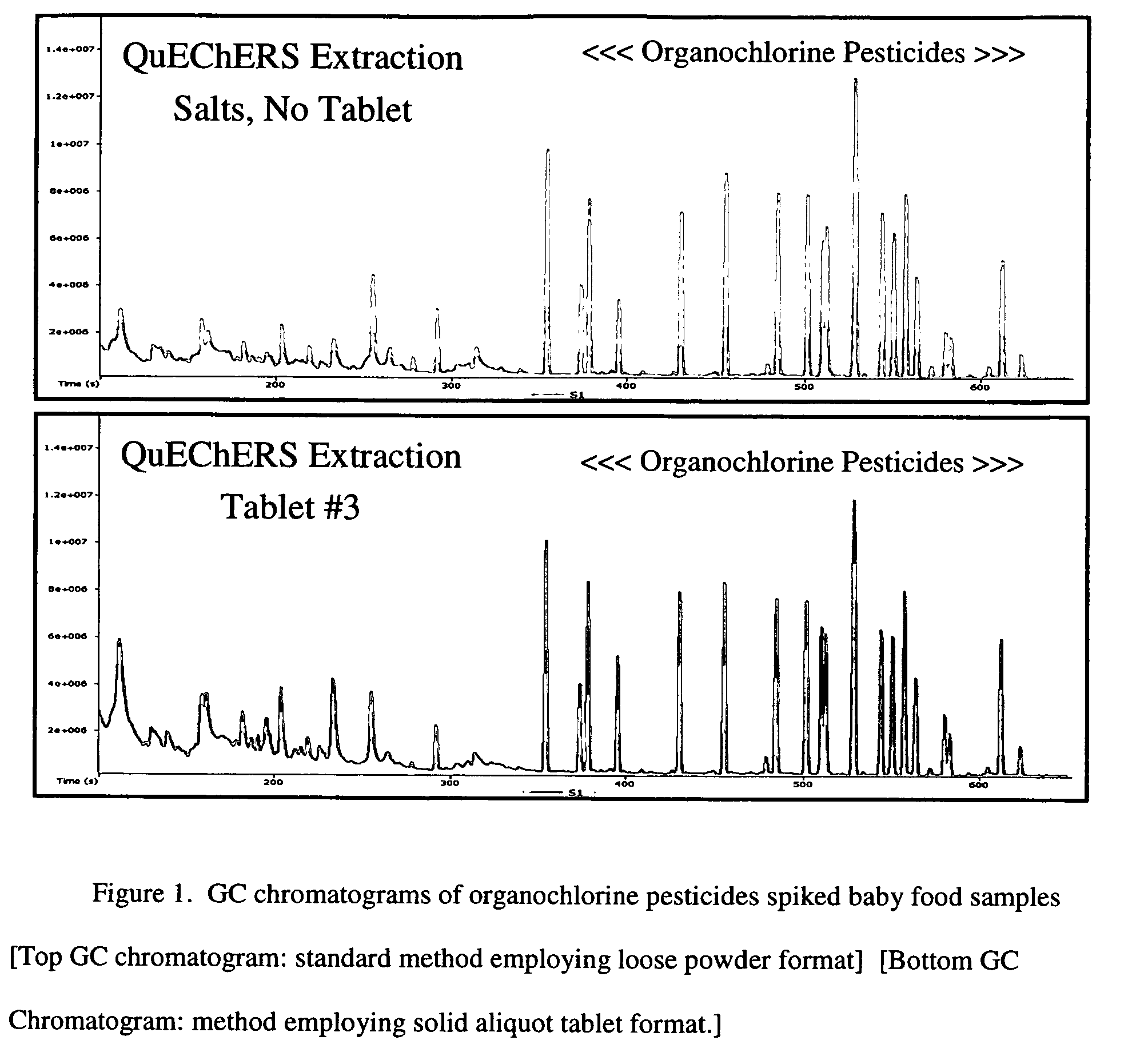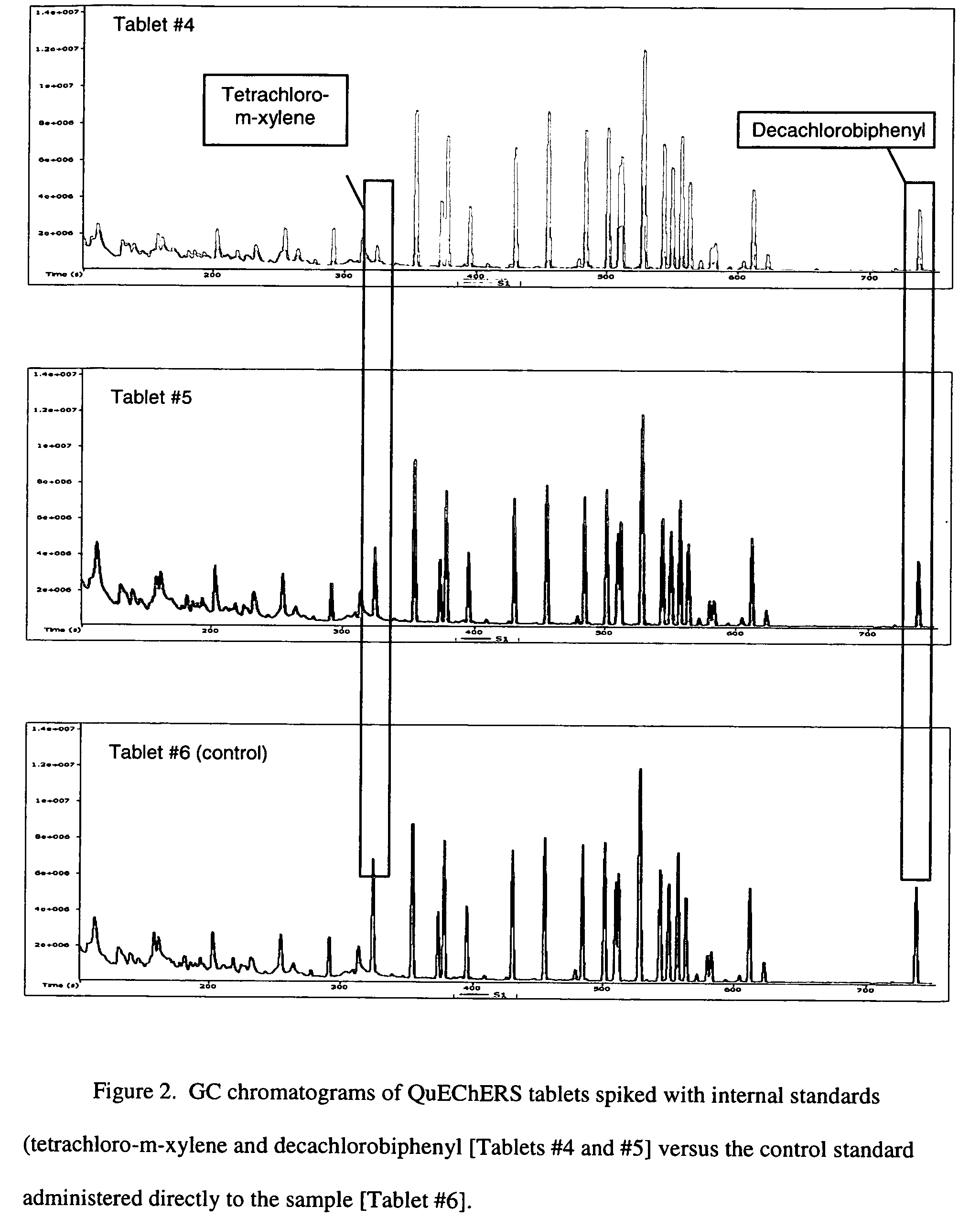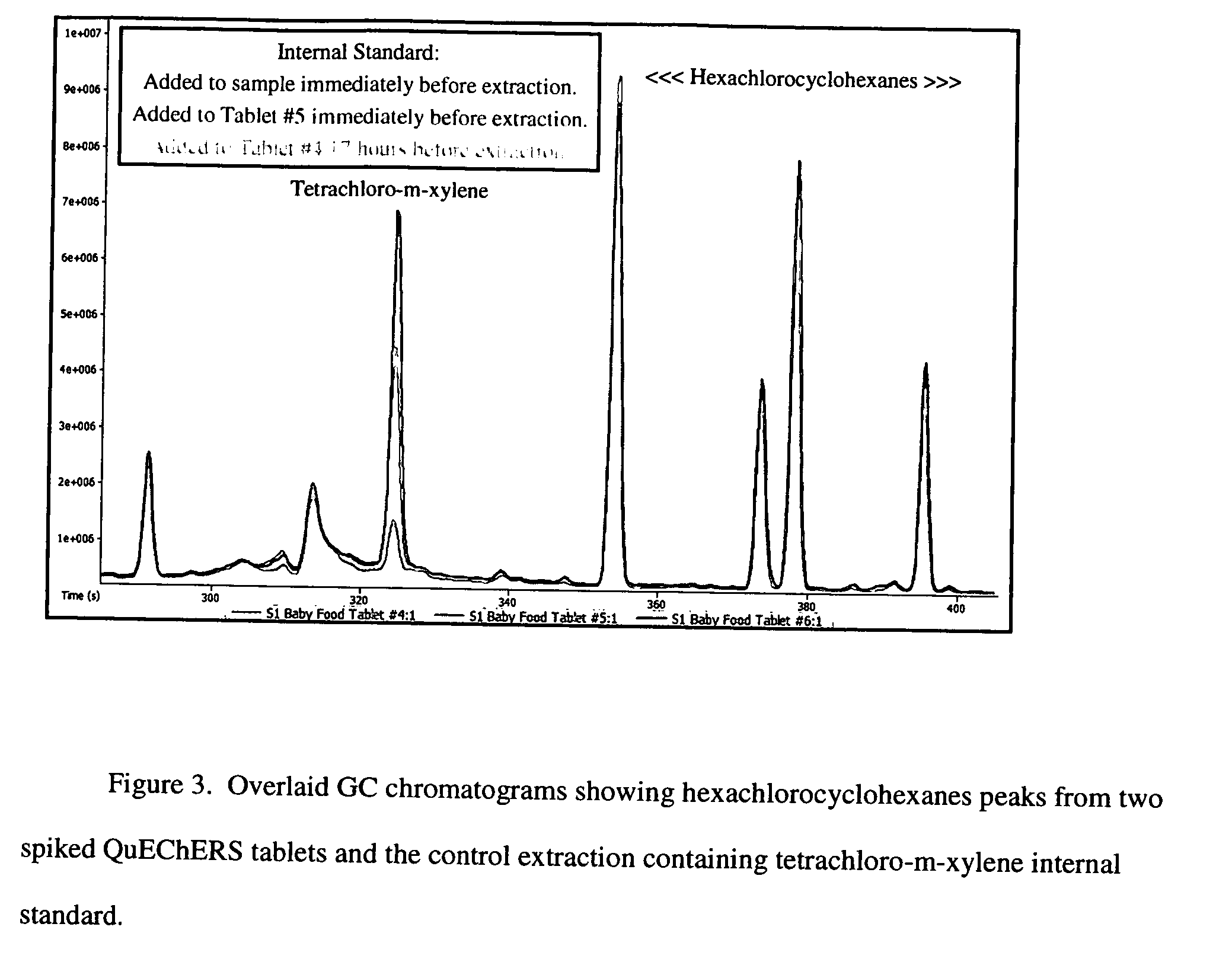Solid aliquots of multiresidue method salts for solid phase extraction applictions
a multi-residue method and solid-phase extraction technology, which is applied in the direction of chemistry apparatus and processes, other chemical processes, instruments, etc., can solve the problems of erroneous analysis data, high cost per sample, and cost and complexity addition to the process
- Summary
- Abstract
- Description
- Claims
- Application Information
AI Technical Summary
Benefits of technology
Problems solved by technology
Method used
Image
Examples
experiment ii
[0154]As expected, the relatively volatile tetrachloro-m-xylene was significantly lost from the surface of the tablet after storage for 17 hours.
[0155]Less volatile decachlorobiphenyl however showed approximately the same response for 17 hour and “immediately before” tablets.
[0156]Tablet failure modes. Tablet #6 exhibited physical separation of the tablet into two pieces. This condition is known as capping or laminating to those skilled in the art of tablet manufacture. Further, tablet #s 4 and 5 exhibited greater hardness properties as compared to previous tablets. Because the standard QuEChERS salts employ a combination of hydrate and anhydrous crystalline forms it is possible for solid-solid interaction and reaction to occur during the compression phase of the tabletting process [23,24].
[0157]The presence of hydrous MgSO4 and citrate salts together, intimately mixed and subjected to pressure, allows for the formation of Mg citrate with a different solubility and crystal structure...
PUM
| Property | Measurement | Unit |
|---|---|---|
| soluble | aaaaa | aaaaa |
| molar weight ratios | aaaaa | aaaaa |
| volumes | aaaaa | aaaaa |
Abstract
Description
Claims
Application Information
 Login to View More
Login to View More - R&D
- Intellectual Property
- Life Sciences
- Materials
- Tech Scout
- Unparalleled Data Quality
- Higher Quality Content
- 60% Fewer Hallucinations
Browse by: Latest US Patents, China's latest patents, Technical Efficacy Thesaurus, Application Domain, Technology Topic, Popular Technical Reports.
© 2025 PatSnap. All rights reserved.Legal|Privacy policy|Modern Slavery Act Transparency Statement|Sitemap|About US| Contact US: help@patsnap.com



